Meet Sanjay, a marketing veteran who loves creating content websites as side projects.
Ten years ago, he learned the importance of finding the phrases and terms used by his customers to search for aspects related to his business. As per his digital marketing education, search engines use the phrases and terms on a page to understand what it’s about.
Further, a wacko blogger friend introduced him to a smart traffic hack. He suggested creating different pages for the synonyms and other variations of each phrase. Hence, Sanjay created an entertainment website. And he published three separate articles on each of the following keywords:
- Shahrukh Khan wife,
- Shahrukh Khan spouse,
- Gauri Khan.
Of course, the content was ‘unique’ on every page with the above keywords used “as many times as possible.” Sanjay created five such websites targeting over 100 keywords on each site. It worked well for about a couple of years as Sanjay got a juicy side-income from the websites by monetizing the free traffic from Google.
In February 2011, things changed DRASTICALLY…
Three out of five sites owned by Sanjay tanked overnight. Much of the traffic on his websites was cannibalized by other pages that were targeting variations the keywords. His side-income vanished.
Since then, Sanjay has tried to evolve his approach to keyword research (you knew we were talking about it all along, right?)
He adopted the mindset of going beyond mere keywords and trying to understand the intent behind every query.
Can you relate to Sanjay and are confused about how to approach intent-based keyword research in 2019?
Then, let’s look at the three major ways keyword research has changed in the last decade. Alongside, I will share actionable strategies to improve your website’s relevance and thereby, make your search campaigns more profitable.
Here we go…
[alert-announce]Table of Contents
[divider]Three Radical Ways In Which Keywords Have Overhauled In The Last Decade
15% Of Searches Google Sees Every Day Are Still New
Google Uses Machine Learning To Understand Close Variants Of Keywords
Search Volume Alone Can No Longer Dictate Your Keyword Strategy
5-Point Checklist To Research Keyword Intent
- Is the keyword displaying a special kind of result?
- Does the keyword have a consistent demand throughout the year?
- Can you see a pattern in the pages that rank for the keyword?
- Is it possible to pull off a better quality/unique angle/more efficient version for the query?
- Does it make business sense currently to target the keyword?
Parting Thoughts
[/alert-announce]Three Radical Ways In Which Keywords Have Overhauled In The Last Decade…
A top content marketing tip that’s shoved repeatedly to bloggers is ‘do keyword research.’ But few people talk about the nitty-gritty of keywords.
See, Google has evolved in its understanding of keywords. It can now uncover the motivation and the context behind every user query. Before we look at the three ways search has overhauled, remember the adage below applicable across the board –
Google is in the business of solving problems for searchers as quickly and efficiently as possible.
For Google, an excellent user experience calls for lowering the number of time users spend on its site. Here is the first significant change in how keywords have evolved with actionable strategies that you could implement.
1. 15% Of Searches Google Sees Every Day Are Still New
Gone are the days you could spank together a 300-word generic article and rank on the first page for popular keywords like “home loans.” Instead of using broad two-word queries, you key in longer and more specific phrases (think “home loans for twenty someone’s”).
It means that Google sees a significant amount of searches that it has never seen before every day. And as we have become smarter in using search engines, the long-tail has risen.
In its analysis of ~1.9 BILLION keywords from its database, Ahrefs found that 92.42% of keywords get merely ten searches per month or fewer.
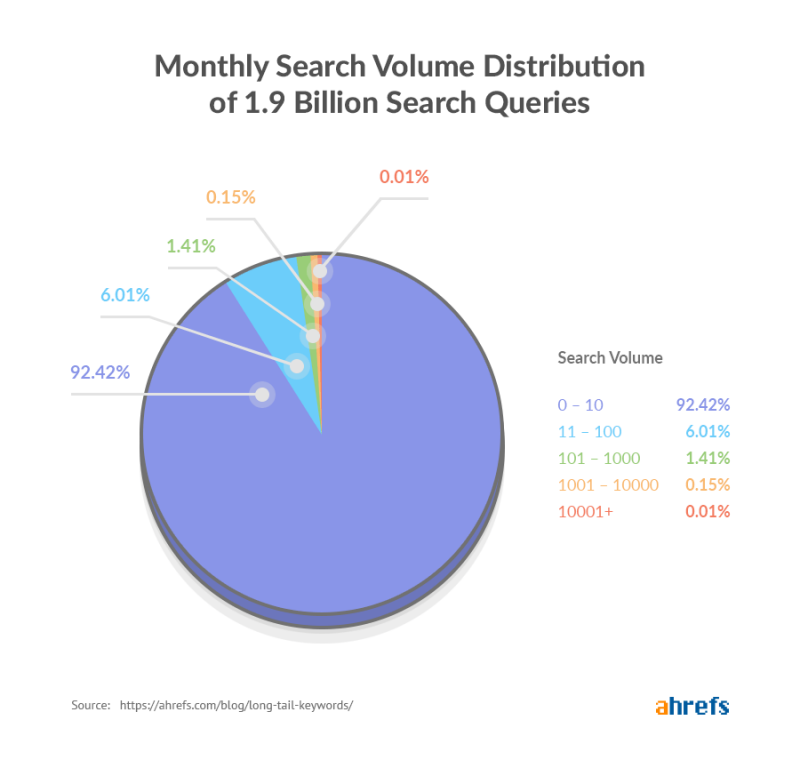
Further, 39.33% of the search demand is generated by 99.84% of queries that have a search volume of a thousand or less.
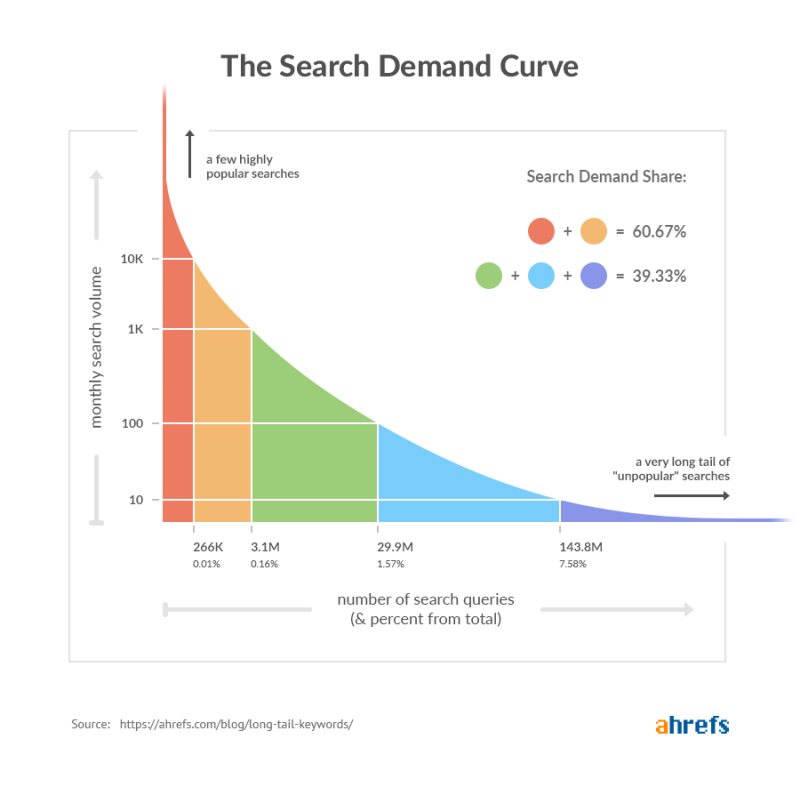
People are highly likely to use a lesser-known, new phrase to discover your product/service. Still, you can uncover their intent and use it to guide your strategy.
A study by Northwestern University on 25,000 search queries analyzed the “psychological distance” of a consumer from taking action. It was found that:
- abstract queries (words like “why”) indicate a person is farther from buying,
- concrete queries with context-related verbs (action words like “shop” and “buy”) indicate a shorter distance to action.
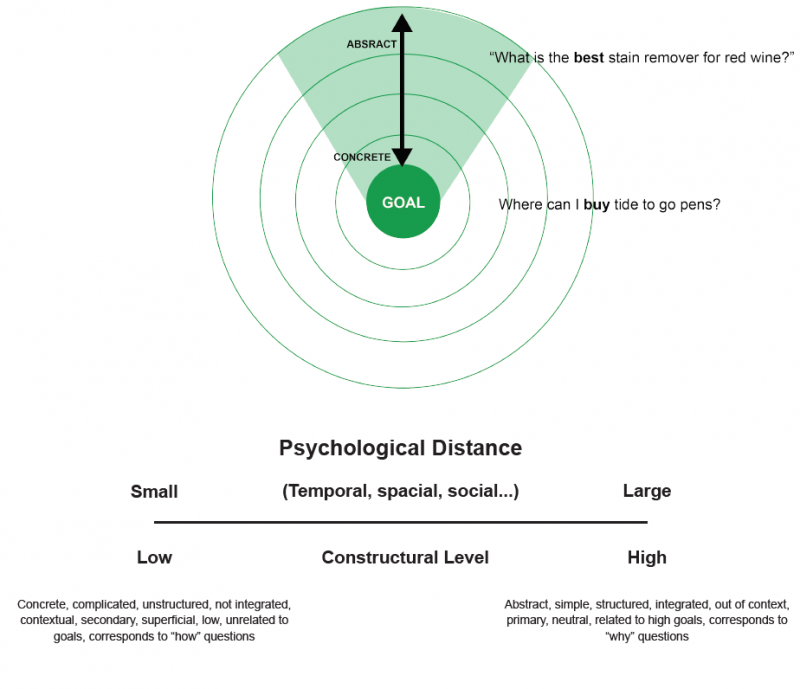
If you understand the intent and distance behind a query, then you can align your content with your audience needs. For example, 81% of sales happen after seven or more contacts. Hence, you can’t create a landing page to buy your product to a prospect searching for information (using “how” and “what” phrases).

Actionable Takeaways
Although people might discover your brand using terms you can’t find out, you can club keywords into limited groups on the basis of the intent and interest. Indeed, here’s a framework for targeting keywords that you can use to create a relevant brand experience for your customers.
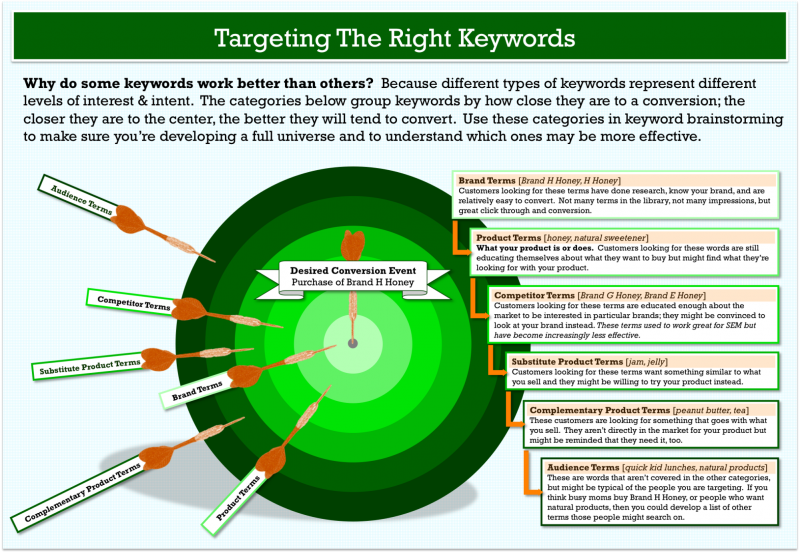
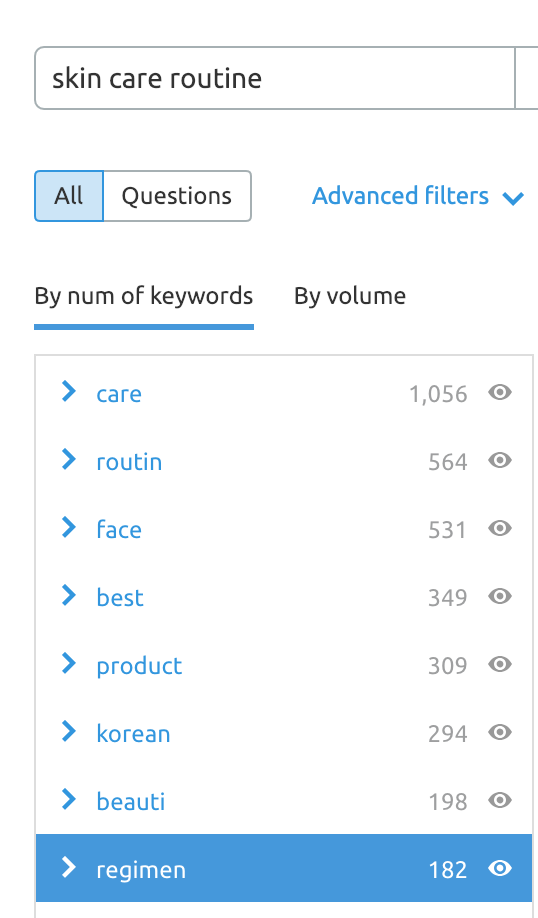
You could also put your keywords inside SEMRush and discover lesser-known phrases that you could target. Let’s plug ‘skin care routine’ inside the SEMRush Keyword Magic Tool.
Now, let’s look at its keyword group ‘regimen.’ I find LOTS of specific questions with a low search volume. The last keyword below suggests that people in their 20s also search for skincare regimen!
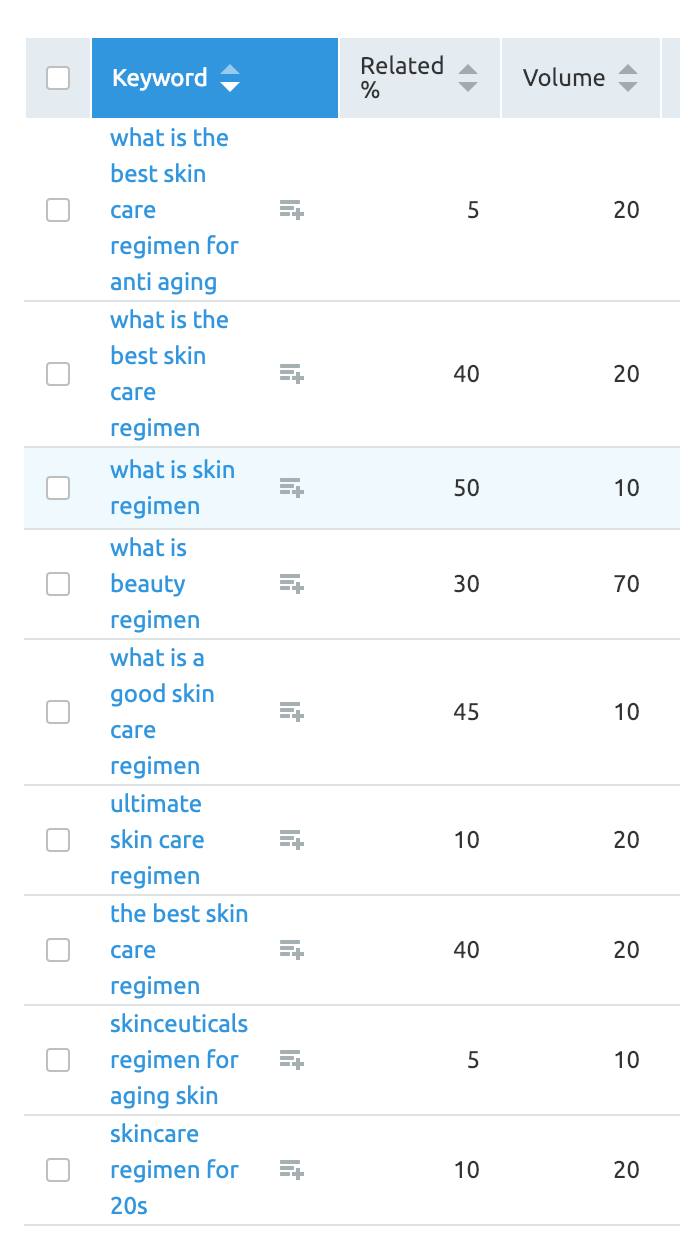
You can even explore keyword groups by volume. Here’s the group ‘korean’, which has a volume of 70,860 spread across 294 keywords. There are certainly a lot of keywords with less popularity.
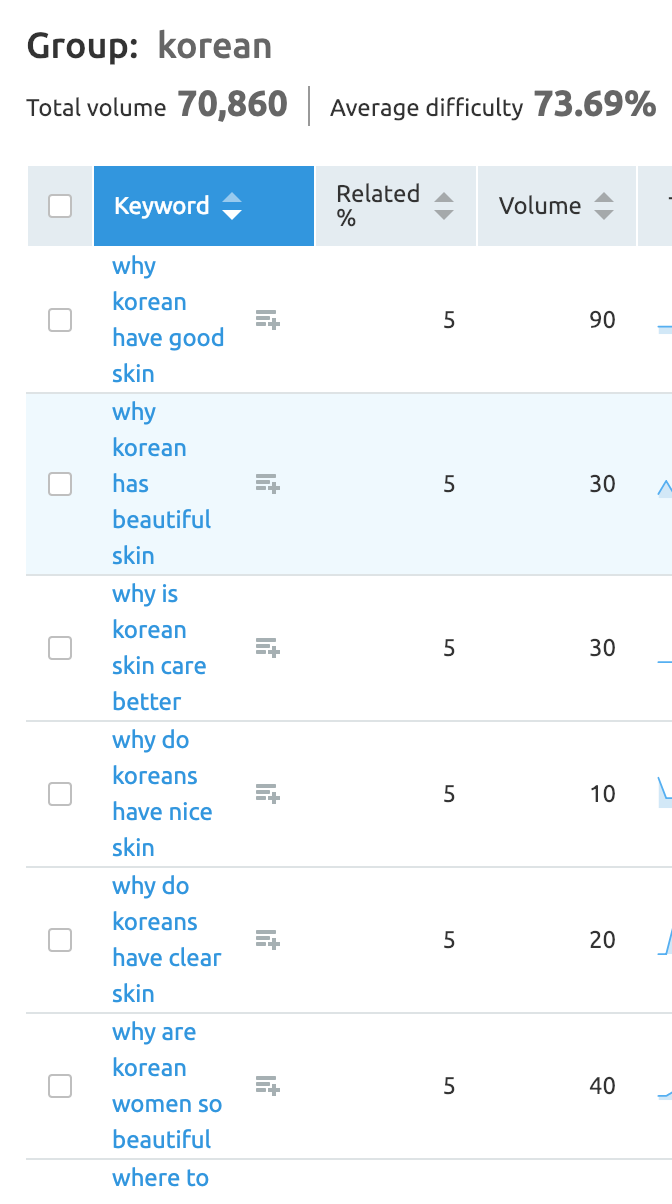
Depending on your business, you may not find relevant keywords in every group. You can discard the keywords that don’t make sense. And add the keywords that you like by clicking on ‘Add to Keyword Analyzer.’

Once you have a list of such ‘uncommon’ keywords, you can analyze which ones make sense for you to target. Don’t worry, I’ll share a checklist you can use for analyzing keywords towards the end of the article.
2. Google Uses Machine Learning To Understand Close Variants Of Keywords
In early 2015, Google announced its RankBrain algorithm to refine its understanding of keywords. They club keyword variants into “concepts/topics.” Which means you can rank for thousands of related keywords even when you don’t explicitly use them in your article. More so if you create long-form content.
For instance, my article on seeking validation brings me traffic from hundreds of long-tail keywords like the ones below. And I have not even used many of those in my writing.

However, in certain instances, you might need to create different pages for long-tail keyword variations. The reason is that they serve different intent. For example, each of the three keywords below can use a separate article each (given that they have sufficient volume):
i. best fiction books,
ii. best fiction books for adults,
iii. best fiction books for kids.
Here’s a comparison of the search engine results page (SERP) for the first two phrases.
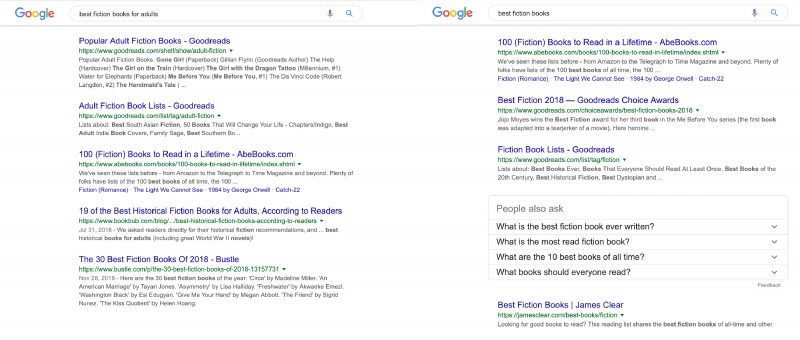
As you can see, the results are a tad similar. It makes sense because users that are looking for “fiction books” will contain a considerable chunk of “adults.” You can likely club the two keywords above and write a single article for them.
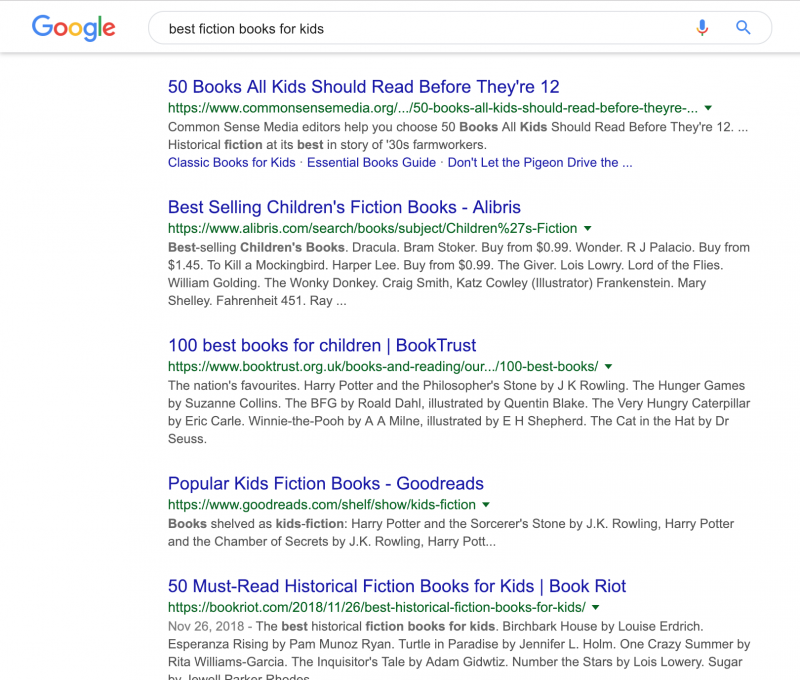
And here’s the SERP for the third phrase.
The results for “best fiction books for kids” warrants creation a different page than the first two. It’s because there’s a low probability of people looking for fiction literature for “kids” will also look out for “best fiction books.” These two are entirely different buckets.
To simplify decision-making in such cases, you could Google each variation of the phrases involved. Then, look at how your competitors are targeting these keywords. If it makes business sense for you, then allocate your resources to create different pages targeting variations.
Actionable Takeaways
A senior quality analyst at Google said that RankBrain is their third most important ranking factor.
Hence, create a consolidated page for closely related keywords that serve a similar intent. For instance, a single article will suffice for the following three keywords: “affordable headphones”, “budget headphones”, and “cheap headphones.”
Next, don’t over-optimize a page with keyword variations to tantalize bots. Instead, write naturally for humans because Google can now understand the content.
Lastly, if you’re confused if a keyword deserves a different page, then compare the SERP results across the related keywords. Then, give Google what it wants as it’s in the business of understanding user intent and is doing a great job at it.
For quick related-keyword recommendations, you can use the SEMRush Writing Assistant inside Google Docs. When I typed the phrase “SEMRush is the best”, then here are the recommended keywords the tool returned.

The guys at Nightwatch have done a great job showing you four ways you can leverage long-tail keywords to catapult your search traffic.
Pro Tip: Create Topic Clusters Instead of Targeting Keywords!
As Google now understands content and clubs keywords into “topics”, you should no longer publish multiple similar articles. It’s bad site architecture. For example, Shoutmeloud.com should consolidate the many pages below that target variations of the phrase “ways to get high-quality backlinks.”
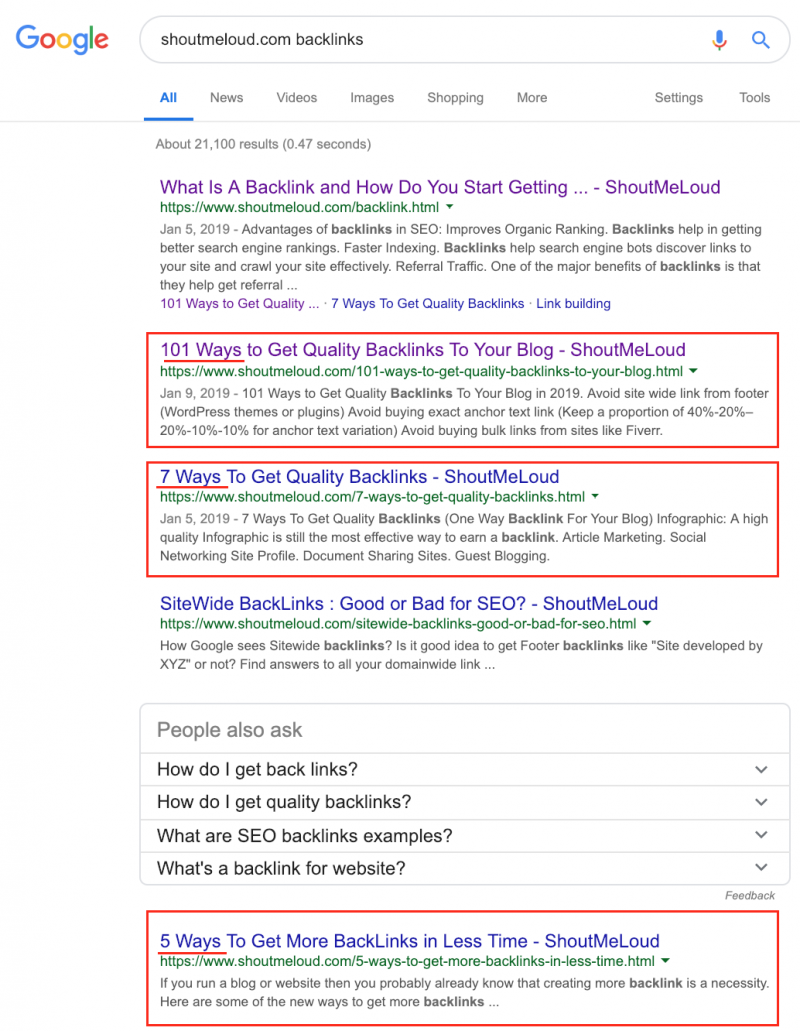
Besides consolidation, you can increase your time on site by creating topic clusters. The SEO strategy calls for creating pillar pages on broad queries. And writing in-depth cluster content pieces for every sub-topic under these searches internally linking back to the pillar page. James Clear has many topic pages, and one of those is “habits.” Here are a few of its clusters.
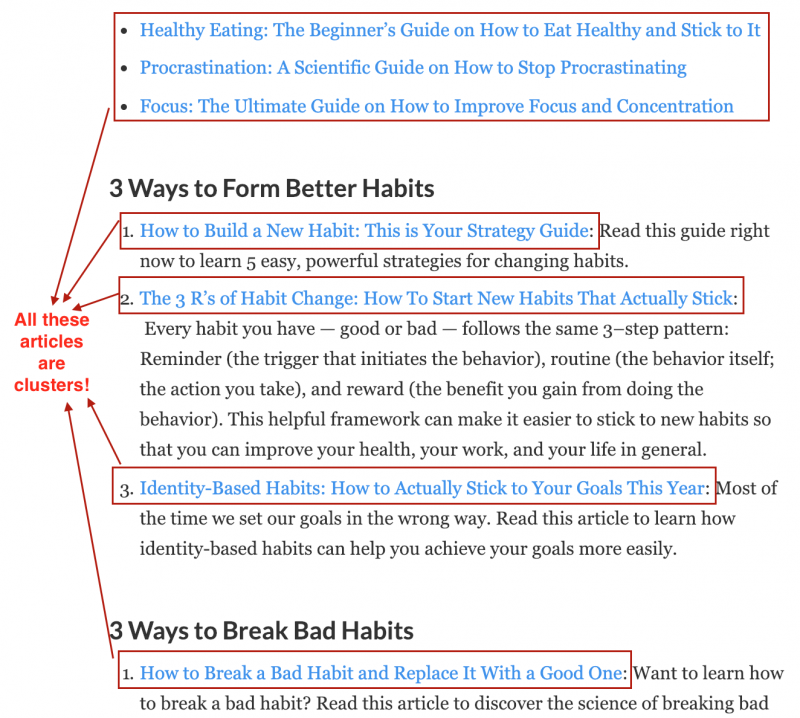
Flattered by the strategy and want to implement it?
To get started, read the topic cluster model article by Elise Dopson.
3. Search Volume Alone Can No Longer Dictate Your Keyword Strategy
Traditional keyword research emphasizes targeting keywords that are decently popular (think, showing a search volume of about a thousand per month inside Google Keywords Planner). It made sense seven years ago when search results contained ten blue links with minimal ads, and most people clicked on the first link.

However, now Google has started combining its AdWords keyword volume data, and it has become highly unreliable. Further, the search giant has turned naughty and steals clicks from the first position. Wonder how?
Well, it goes back to May 2012 when Google launched Knowledge Graph.
With the goal of improving its search relevancy, it started providing information to the users even without them clicking. SERP moved beyond returning links. It could feature images, questions, styling, videos, and other information from websites to provide answers to user queries.
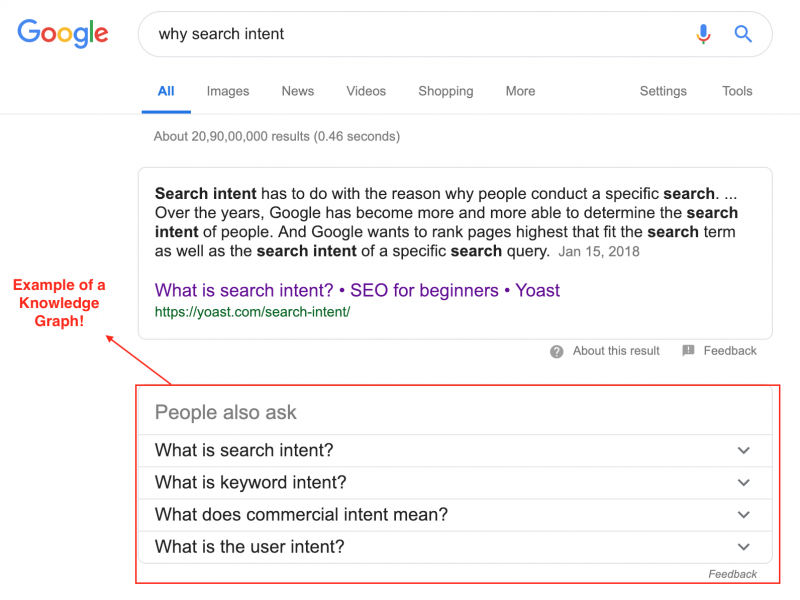
Lastly, Google has increasingly plastered ads in SERPs pushing the organic results further down. The increasing complexity of search results means that ranking websites are seeing a drop in click-through rates (CTR) and thereby, losing traffic.
Or are we?
Well, any page that ranks for a keyword also gets a LOT of long-tail traffic (indeed, the #1 ranking page might rank for 1,000 related keywords). For instance, the article I shared on validation gets a few visits from the following keywords as per Ubersuggest.
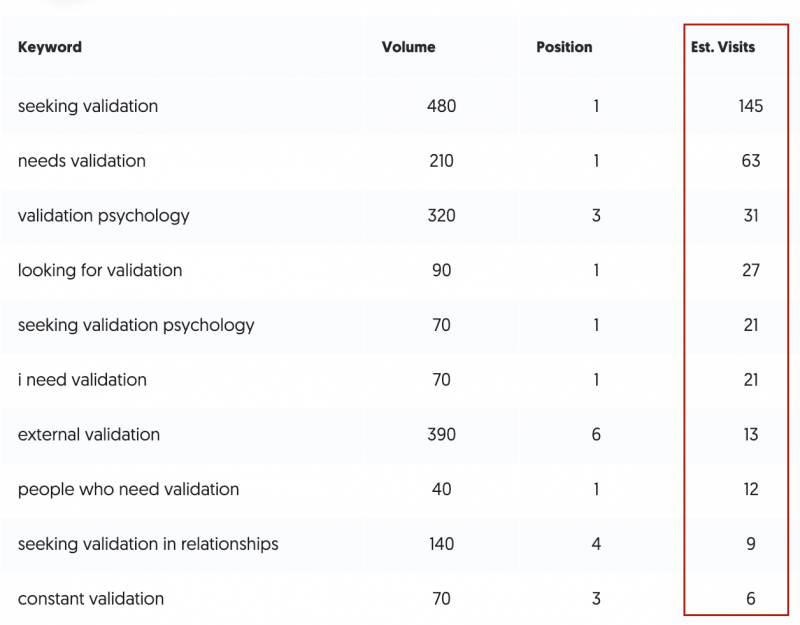
In total, the article touches 950 visits/week as per Google Analytics (a decent amount of traffic, aye?)

Hence, relying on the search volume of the short-tail keyword “seeking validation” would have wrongly led me to drop the keyword from my campaign.
Actionable Takeaways
Instead of relying on the volume of one keyword alone, you can insert it inside a tool like the SEMRush Keyword Magic Tool. Then, check the approximate ‘total volume’ for all the related keywords you might rank for. When I plugged “keyword intent” inside SEMRush, it showed me a total volume of 150 with a list of related keywords as below.
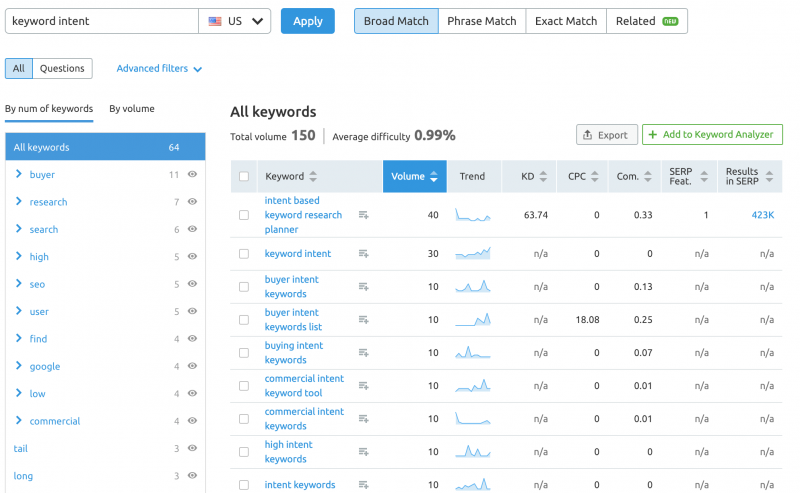
By doing such research, I will also find the keyword that has the highest volume that I can use in my title and headings.
Also, you can rank for featured snippets to get extra brand exposure. You need to find out the exact wording that people use on your subject and answer it in your article.
For example, suppose you love blueberry cheesecake (if you don’t, then I’m judging you!) And you want to create an article on it. You can plug it inside the Keyword Magic Tool and head to the ‘Questions’ tab. Here are the common queries people have regarding blueberry cheesecake.
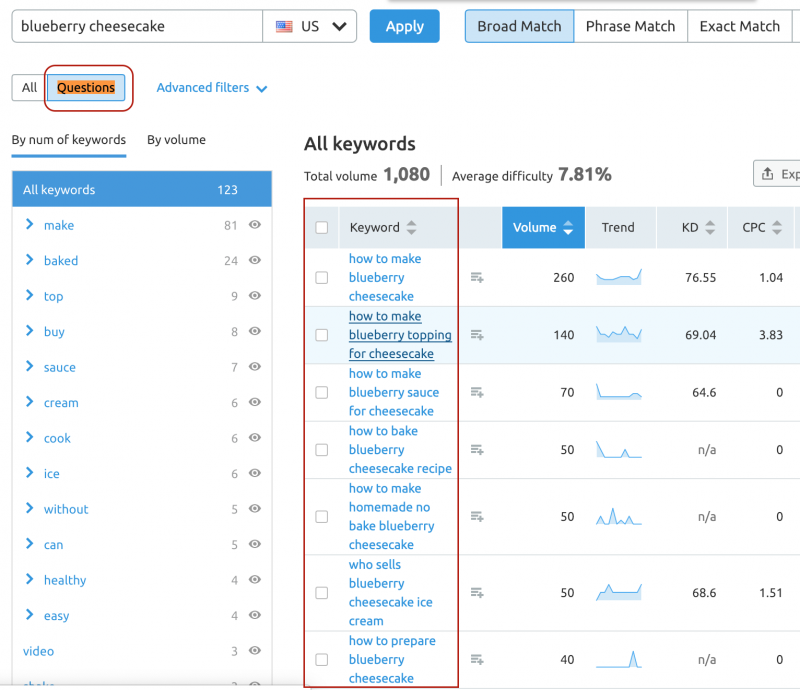
Pro Tip: Instead of Prioritizing Keywords With Volume, Begin With Your Audience Pain Points
A conversion-focused strategy you can use to approach your keyword research is pain-point SEO. Devised by Grow and Convert, it’s based on the pretext of interviewing your audience to understand their goals and hot-button issues. Then, addressing them with your content and find relevant keywords accordingly.

Often you might find that a keyword (and its associated article) gets you more traffic, but you lose out on conversions. Grow and Convert demonstrate the same with a client’s Google Analytics screenshot below. The first two posts get almost the same amount of traffic, but there is a stark difference in their conversion rates (0.34% vs. 0.04%).
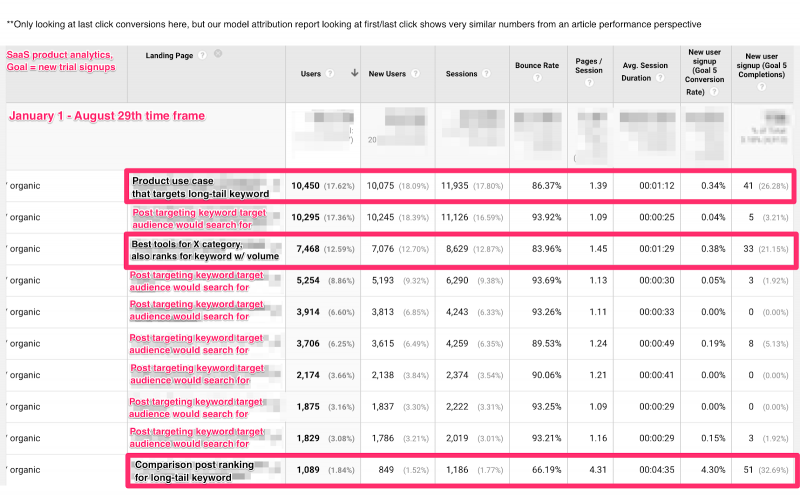
Ultimately, traffic is a vanity metric that won’t pay the bills. But sales of your products and services will. Choose wisely.
5-Point Checklist To Research Keyword Intent
Before we part our ways, here’s a checklist you can use to research intent. Once you have a list of potential keywords, you can use the questions below to filter the keywords worth your time.
1. Is the keyword displaying a special kind of result?
If you key in “Narendra Modi Age”, then Google gives an immediate answer. It means that you don’t need to even click on any of the search results.
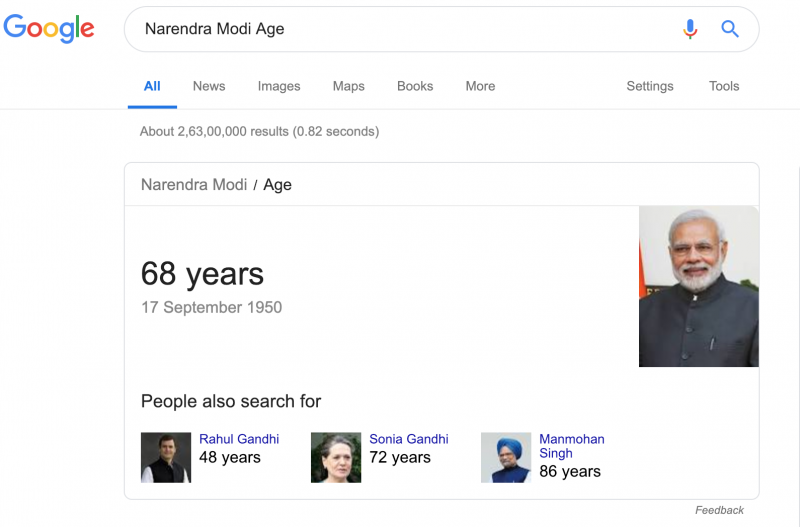
Similarly, queries that have terms like “calculate”, “translate”, “near me” and the like would return immediate results. Hence, they are not great keywords to target. It makes sense to discard the keywords that possess such instant answer snippets, a lot of ads, and other aspects that could affect your CTR.
2. Does the keyword have a consistent demand throughout the year?
Often, keyword tools return the “average” monthly volume. However, what if the demand for your targeted keyword isn’t consistent throughout the year? For example: “Diwali gifts” only spikes for about a month around the festival as per Google Trends.
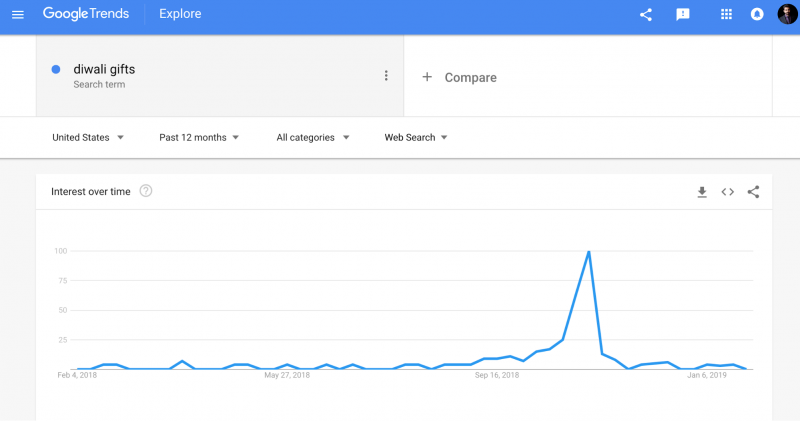
As a business owner, you need to be prepared to handle lean months for such keywords. Hence, plug your keyword inside Google Trends to check its demand.
3. Can you see a pattern in the pages that rank for the keyword?
Scan the SERP once to see if there are a lot of videos and images for the keyword. If you can’t replicate the results, then you’re better off not targeting the keyword. For example: “How to tie a knot?” returns the following SERP.

With so many YouTube videos already ranking (with one even as the featured snippet), it doesn’t make sense to create textual content targeting the keyword.
You could even extend the concept to find out the content type that’s dominating in SERP for your keyword. It’s Google’s showing what people want to consume (it’s their business model to serve users efficiently, remember?)
So if you’re a car selling company, then targeting the keyword “buy used cars” in an article might not make sense. It’s because SEMRush shows below that 9 out of 10 results on the first page are buying listings.
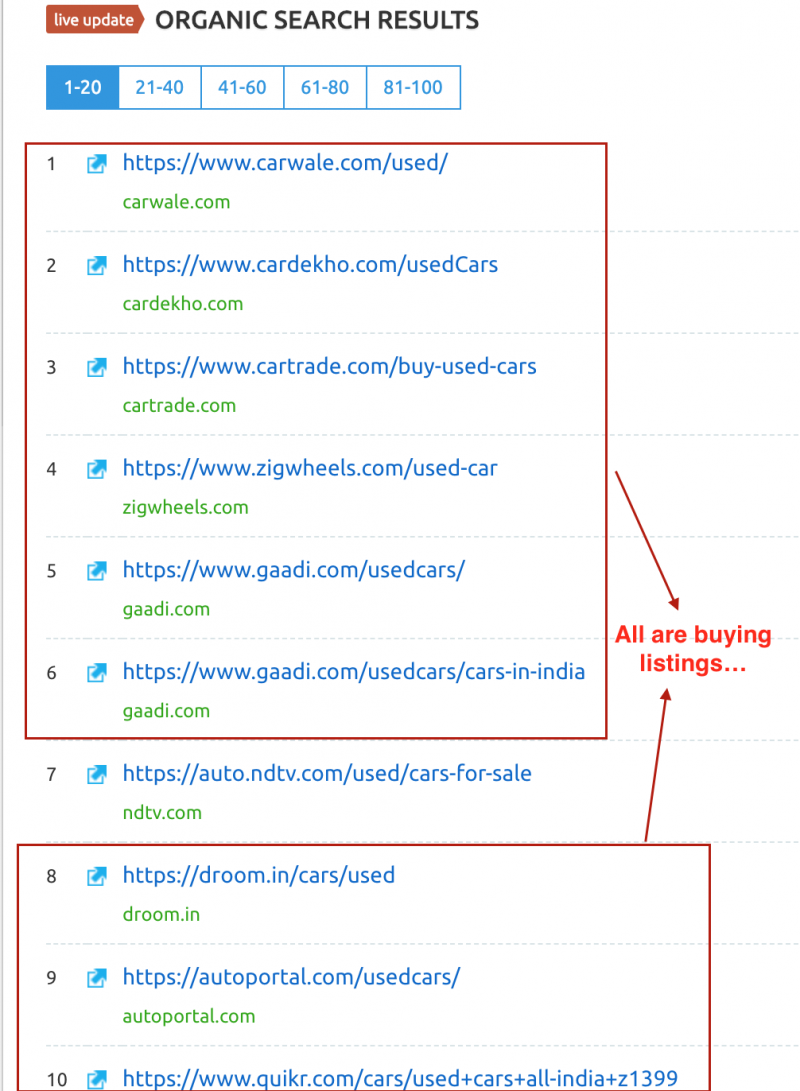
Instead, you should target a query like “should I buy second hand car?” The SERP below shows that informational articles rank for the phrase. Further, you can even see the content type that users (and hence, Google) prefer for the query – the knowledge graph and five search results are listicles.

Instead of reinventing the wheel, write a list article.
4. Is it possible to pull off a better quality/unique angle/more efficient version for the query?
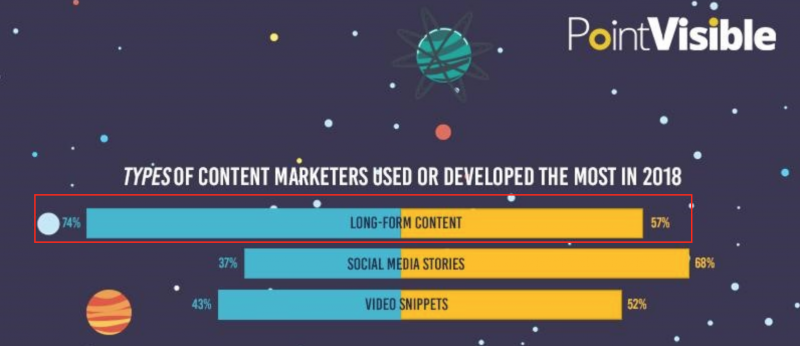
The internet has become polluted with content with more than 4 million blog posts being published every day. Hence, to stand out you and increase your chances of ranking in Google, you need to create better quality, long-form content. Point Visible found that it was the most used form of content in 2018.
However, that in itself is also not sufficient because long content is often boring. I reached out to Codeless (experts at creating long-form content). The founder Brad Smith emphasized the importance of focusing on a unique angle and writing in your own voice for differentiating your content from the noise.
I first-hand experienced the importance of a unique angle. When all competitors for my subject of “external validation” suggest stopping seeking validation (see the red boxes), I wrote why it’s okay to seek it occasionally (the black box).

I see an average on-page time of over five minutes on the article.
Of course, it’s important to make a strong argument when you’re taking such a stand (in my case, I referred to a psychology study).
Also, if you can answer the query of the searcher more efficiently than creating another content piece (say, by developing a tool), then allocate resources to it. For example, SEMRush could write an article on the ‘best SEO recommendations for creating content.’ However, they created SEMRush Writing Assistant that shows it action.

Isn’t it more actionable than reading a 2000-word article?
5. Does it make business sense currently to target the keyword?
On the basis of your available resources, the estimations above, and the difficulty in ranking, you can prioritize the keywords that make business sense for you.
When I was creating the content marketing calendar for The Ecommerce Academy (T.E.A.), I plugged keywords inside a sheet. Alongside, I listed the monthly traffic potential and the keyword difficulty. Then, Mark Patchett, the founder at T.E.A. analyzed them. He filled the other two columns ‘Value to TEA’ and ‘Notes’ to help us zero in on the keywords we could target.

Then, I used his feedback to arrive at the final content calendar (screenshot below).

The above spreadsheet is a modified version of the content marketing strategy template by Ryan Robinson (props to him for showing us the way!)
Parting Thoughts
Blindly targeting keywords without understanding the intent behind them is a losing strategy. Now, you need to uncover the context and motivation of the searcher. Then, provide content that keeps your users engaged.
I showed you the three major ways SERP has evolved. And a 5-point checklist to perform intent research. If you want to have a complete guide to keyword research, then you can refer this guide by Mangools. Now, it’s your turn to implement the tactics and open doors to more revenue from your search campaigns.
Are there any ways you research the intent of your audience? Let me know in the comments.
Chintan Zalani is an ROI-focused content marketer and currently leads the content marketing at The Ecommerce Academy (T.E.A). Join him at Elite Content Marketer where he shows you how to grow your business through content.




